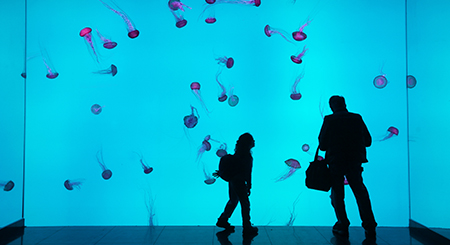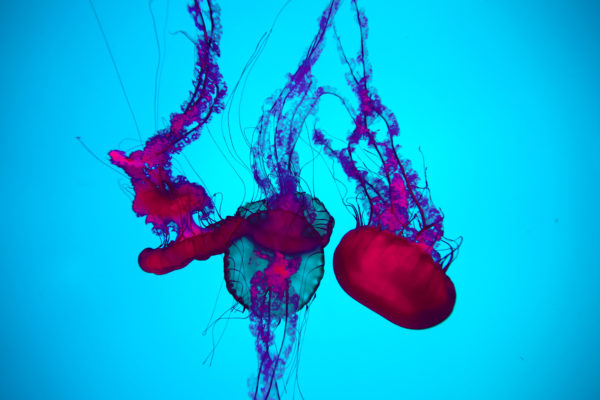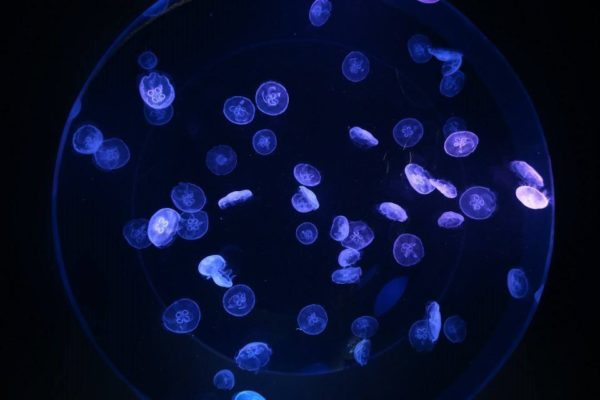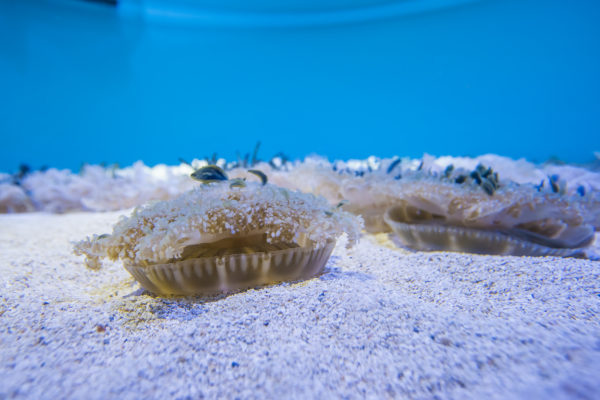Pacific Sea Nettles
One of the most photographed animals at the Aquarium, the Pacific sea nettles, are easily one of the most bizarre creatures on display. These brainless, eye-less creatures are almost 95% water! With no eyes to help detect their food, they rely on light-sensing organs.




